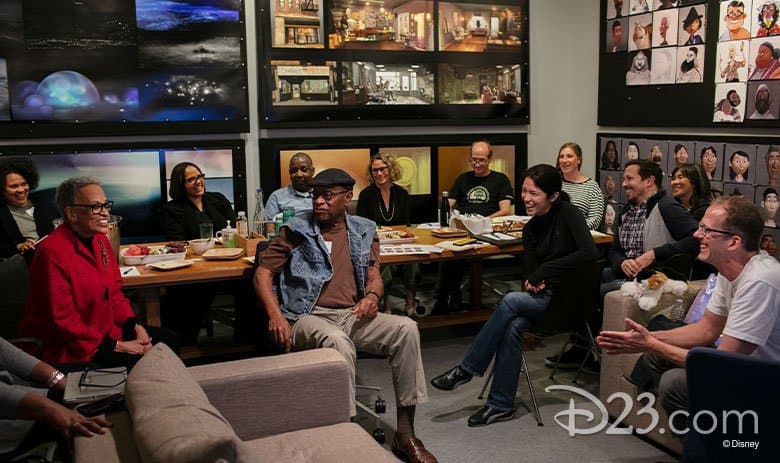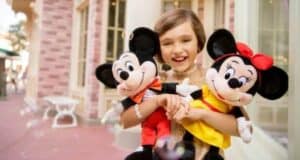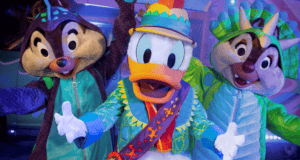
Pixar Animation Studios, longtime co-partner and subsidiary to the Walt Disney Company, has an ongoing commitment to celebrating diversity and fostering respect and appreciation for all kinds of people. By successfully representing different cultures and ethnicities and honing in on those specific, personal characteristics and stories that speak to every person’s own unique yet relatable experiences, Pixar has made watching an uplifting Disney-Pixar production a way that we all discover strength, motivation, and encouragement. It’s the ultimate celebration of individualism and originality.
But how does Pixar do what it does so meticulously in representing diversity with such precision and accuracy? They constantly rely on numerous internally established cultural trusts within the company to diligently oversee the authentic and empathetic portrayals of characters and ensure that storylines are handled in a conscientious, unoffensive, and unifying way that garners mutual respect while keeping viewers interested.
Related: Take a Look Behind the Scenes with Inside Pixar: Foundations on Disney+
We’ve seen the effectiveness of cultural trusts at work within plenty of Disney-Pixar films over the years. Positive portrayals of culturally diverse populations have ranged from subtle inclusion references within a given work to the more obvious presentations in which a film’s starring protagonist represents a minority or deviating character from an established norm. This year’s release of Turning Red actually places the lead character in several predicaments of this sort.
Not only is Meilin “Mei” Lee a 13-year-old North American girl of Chinese descent, dealing with the usual issues related to cultural identity and adjusting to adolescence in general, but she also just so happens to have a unique, uncontrollable tendency to transform into a giant red panda.
And while moviegoers can agree that the film does well in garnering viewer empathy for Mei, it cannot be denied that the team of cultural consultants who lent a hand on the project really outdid themselves in getting to the core essence of the film on such a commendably authentic and personal level. How are Pixar’s cultural trusts able to tackle such sensitive material so perfectly and make even fictional fantasy works mutually relatable as a whole? Here’s a little background on how it’s all carried out.
Related: ‘Turning Red’ Praised for ‘Efficiency’ – What Could That Mean for Film’s Quality?
It’s Not About Political Correctness
While we’ve seen plenty of progression in representing broader cultural identities in more recent years, many well-meaning onscreen portrayals of minorities fall short in hitting their intended mark of garnering more public awareness and respect. Such attempts fail because they end up producing overly patronizing works that try too hard. In such instances, the focus becomes more about representing a diverse population as the overshadowing focus rather than equally cultivating an interesting, mutually enjoyable plot to go along with the viewing experience.
Pixar is successful at avoiding such traps because they take a more casual, go-with-the-flow sort of approach in their mutual diversity inclusion initiative. They understand that the handling of cultural sensitivity and inclusive diversity, while integral to a film’s plot, should neither dominate nor take precedence over defining the main character or overarching storyline. Just as people live their lives as individuals, and are defined by their individualities, the presentation of such characteristics works better when in tandem with all the other elements at work rather than taking over the spotlight.
Incorporating Personal Experiences
While considering the sensitivity in content is indeed important, overly attempting to do so presents another classic way by which well-meaning tries at diversity inclusion fall short in hitting their mark. Many take to tackling stereotypes as the primary mission for breaking narrow-minded, preconceived notions. And while stereotypes are undoubtedly detrimental and hinder the course for overcoming predetermined boundaries set in place by society, an overbearing attempt at overriding them as the primary focus ends up getting in the way of providing for a character’s authentic, personal struggles that may have actually been motivated by such stereotypes in the first place.
Such struggles mustn’t be ignored altogether by creating a false world where they don’t exist at all. Pixar understands this. Therefore, rather than focusing on a break from stereotypes in general, they subtly yet effectively foil unfair preconceptions by drawing on factual, personal experiences that come from actual members of their cultural consulting team with the relative experience to the personal issues being addressed.
As a result, they are more successful when shattering glass ceilings by tackling a storyline with a personalized rebuttal rather than a well-meaning fictional plot ploy that works too hard in making redundant the unfair idea at hand, and loses integrity in the process.
A Professional Way of Dealing
We touched on personal inspirational influences being imperative for drawing out authentic, relatable experiences played out in Pixar films. With each of Pixar’s specific cultural trusts working behind the scenes of any given work in development, they are far more suited than others in presenting what could otherwise be uncomfortable, controversial subject matter with the potential to offend rather than unify.
But because the group consists of employees who can professionally deal with such matters as living examples and content experts, there is no tip-toeing around or fear of doing something incorrectly in the way that an outside source may do, honorable intentions aside. In this way, nothing detracts from the core of effectively carrying out what a professional source can denote from personal experiences.
Related: OpEd: ‘Turning Red’ Echoes Familiar Disney/Pixar Transformation Trends We’ve Seen Before
A History of Personalization
It’s true that every creator puts a little of himself/herself into their final product. And Pixar has a history of getting to the essence of personalization through personal past experiences from those working behind the scenes of the final product. Even films like Toy Story, A Bug’s Life, Up, Onward, and Luca tie in very real links and personal stories to those who worked on creating them.
And when Soul came out back in 2020 it fit so perfectly and precisely with the presentation of African American Jazz culture that it just couldn’t have been so effective any other way. And now Turning Red continues the tradition in a similarly revolving roundabout way.
Related: EPCOT’s “The Soul of Jazz” Exhibition Opens at the National Jazz Museum in Harlem
The Spot-on Accuracy in Turning Red
Some have expressed opinions regarding Turning Red breaking with some of the more traditional longtime rules at play with Pixar. But where it matters most, the film couldn’t be more on par with upholding the Pixar tradition in carrying out relatable, mutual, culturally driven storylines. As we touched on previously, the film represents not just one but three struggles associated with feeling different.
First, you have the personal internal battle about being a teenager growing up in western society while balancing out home life in a traditional Chinese family. Then you have the awkwardness of adjusting to adolescence in general. Lastly, there’s that elephant in the room (or in this case red panda) about transforming into a beast. The latter is allegorical on several accounts including unwanted, uncontrollable changes and feeling like you are the only one in the world dealing with a problem that’s unique to you alone.
Related: “Adolescent Chaos”: Pixar Animator Discusses ‘Turning Red’
As a Chinese-Canadian herself, Director Domee Shi incorporated many of her very own relatable experiences into Turning Red. The film is even set during the early 2000s in Toronto — the exact city she grew up in and around the same timeline for when Shi, herself, would have been a teenager. Additionally, we see many dated references of the day, including popularity with Tamagotchi pets, and the crazed obsession with boy bands.
And what’s perhaps most personal for those of North American-Asian descent, in particular, is the way Mei Lin’s relationship with a loving but strictly traditional family plays out on-screen. It hits the nail right on the head as do the overblown yet very real emotional ploys of her mother’s well-meaning but embarrassing tactics. And those elements in particular garner the highest praise from the ethnic group who can most relate to it.
Related: ‘Turning Red’: An Ode to Mothers, Daughters, and Female Adolescent Chaos
The Pixar Cultural Trusts do a phenomenal job in living up to their commitment for presenting fair, positive, and accurate portrayals of the human experience as a whole. They truly excel, far better than most, in representing and including culture and diversity in ways that are both accurate and respectably carried out. An endeavor that can only be described as successful!









